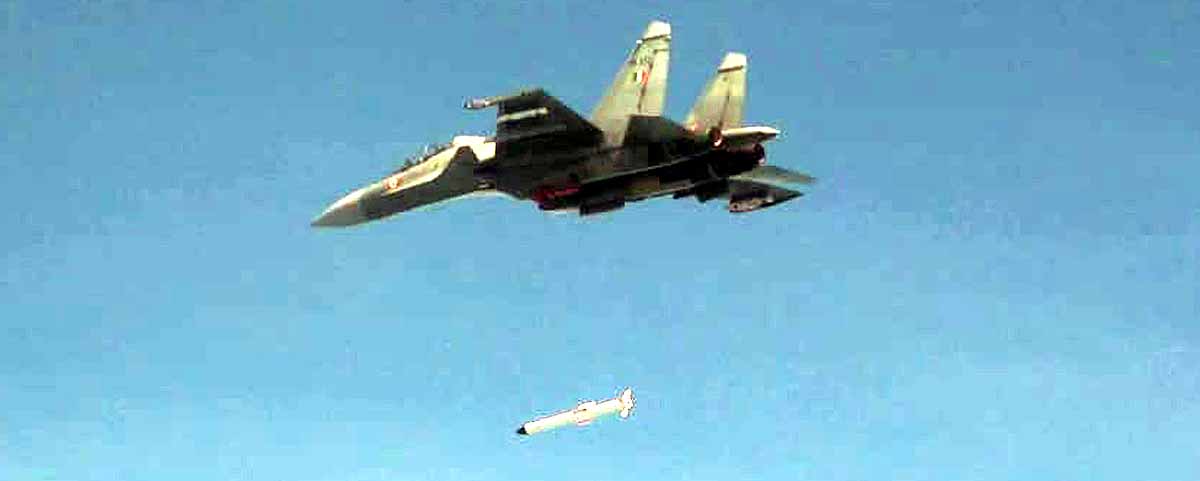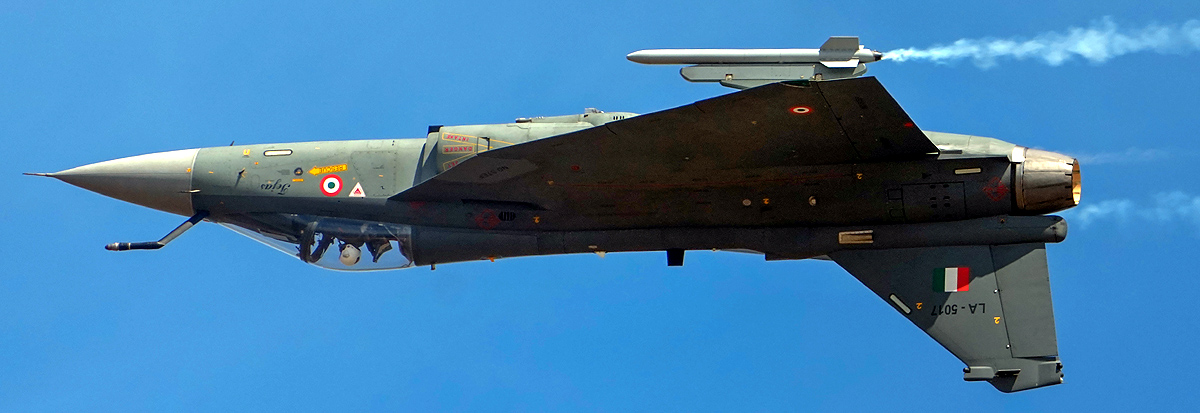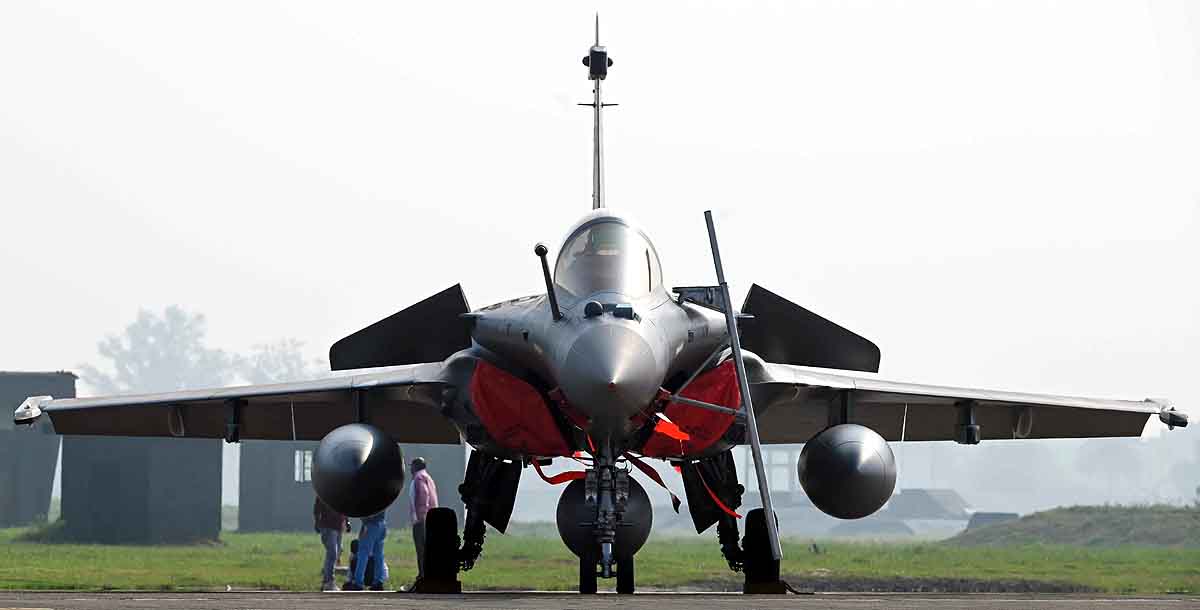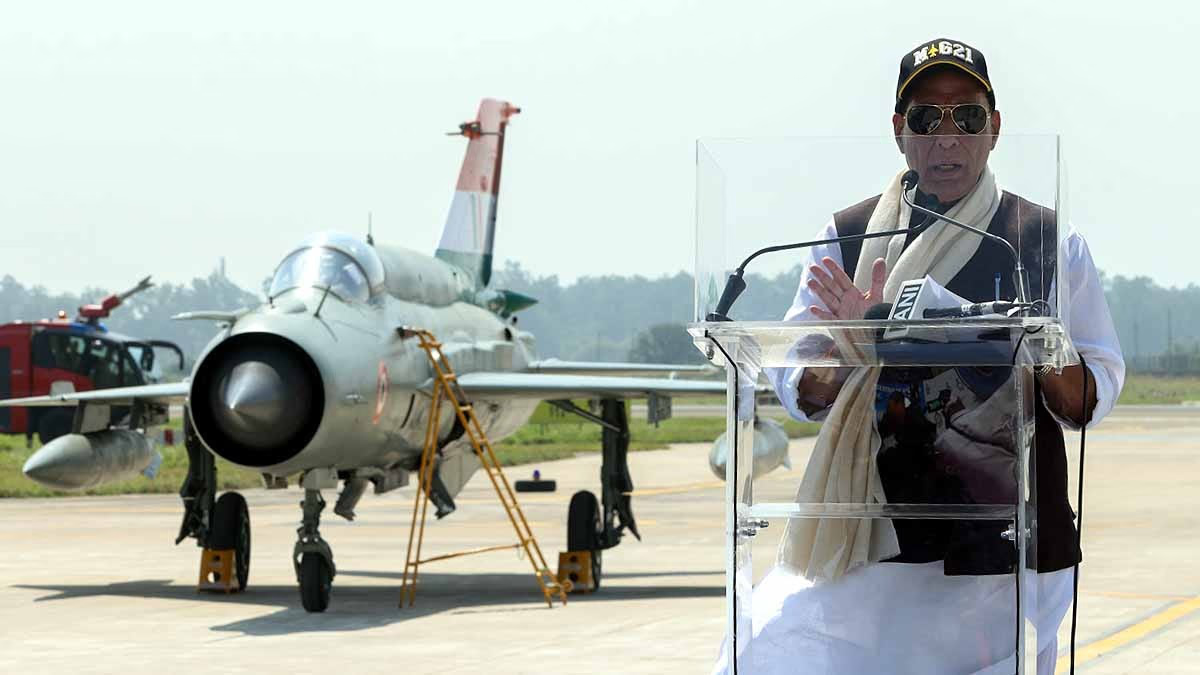The Indian Air Force is plotting a strategic coup with plans to integrate the Rudram-1 missile into their Rafale and Tejas MK-1A fighter jets. The Rudram-1 is a state-of-the-art new generation anti-radiation missile (NGARM), designed specifically for destroying hostile radar stations and communication hubs from the air.
This significant upgrade will exponentially enhance the capabilities of the Indian Air Force. Rudram is unique in being both supersonic and hypersonic—allowing for rapid engagement of targets at range. Weighing 600 kilograms with a length of 18 feet, Rudram-1 is armed with an advanced high-fragmentation warhead of 55 kilograms to ensure maximum lethality.

Source: aajtak
The missile's range is 150 kilometers, permitting the Rafale and Tejas fighter jets to strike adversaries from a safe distance without needing to come close to the target area. It can also ascend to altitudes higher than its launch point, reaching from 1 to 15 kilometers above the ground.
Distinguished Innovation: Home-grown Missile with Deadly Speed
The Rudram-1 missile soars towards its objective at Mach-2, that's an incredible speed of 2470 km/h. Although initially planned to be equipped on Rafale and Tejas jets, future plans involve other aircraft such as the Tejas MK-2, AMCA, and TEDBF fighter jets. Currently, the weapon adorns Indian MiG-29UPG, Dassault Mirage 2000, and Su-30MKI fleets.
Let's explore the strengths of both fighter jets...
Tejas MK-1A Fighter Jet: A Swift Technological Marvel
The Tejas MK-1A boasts enhanced systems like a digital fly-by-wire flight control computer (DFCC), maintaining an aircraft's balance in tandem with the pilot's inputs. This system governs the jet's electronics, radar, elevators, ailerons, flaps, and engine operations—stabilizing flight and ensuring safety.
Laden with State-of-the-art Features, Tejas Elevates Combat Readiness
Tejas MK-1A's upgraded version consists of an advanced mission computer, the DFCC Mk-1A, and a collection of sophisticated devices such as smart multi-function displays (SMFD), an electronically scanned AESA radar, plus a comprehensive electronic warfare suite, fortifying it against a host of threats.

Source: aajtak
Tejas: Agility and Combat Efficiency in One Frame
The MK-1A may be lighter than its predecessor, but retains the substantial 43.4 feet length with a 14.5 feet height. Capable of a combat range of 739 km, its ferry range extends up to 3000 kilometers. Equipped with 9 hardpoints for a variety of weaponry and a twin-barrel cannon, it flexes its power in airborne combat scenarios.
Rafale Fighter Jet: Dominating the Skies with Precision
Initially developed alongside the Eurofighter, France later dedicated their resources solely to the Rafale, now a key component of the Indian Air Force with 36 jets. Capable of single or dual-pilot operation, the Rafale measures 50.1 feet in length, with a wingspan of 35.9 feet and a height of 17.9 feet.
With a max speed of 1912 KM/h and a combat range of 1850 km, Rafale's operational range goes up to 3700 km. The jet can climb to a height of 51,952 feet and is fitted with a 30mm autocannon capable of launching 125 rounds per minute. It offers 14 hardpoints for an array around-to-air, air-to-ground, and air-to-surface missiles, including nuclear deterrence capabilities.

Source: aajtak




